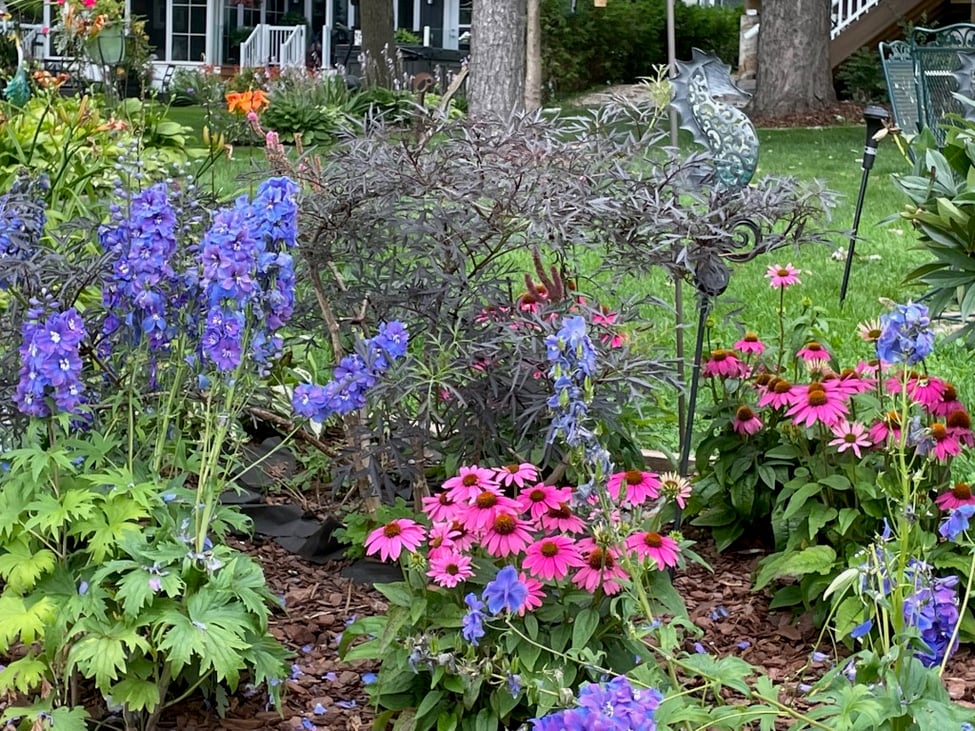🐝 Pollinators aren’t just garden guests—they’re the powerhouses behind our food and flowers.
Bees, butterflies, and hummingbirds fuel ecosystems and food crops alike—and you can help them thrive right from your backyard (or balcony).
🌸 Here’s how to turn your space into a pollinator paradise:
🌼 1. Go Native
Choose native plants that have evolved alongside local pollinators—they’re more resilient, require less care, and offer the nectar and pollen local species rely on. If native options aren’t available, go for cultivars that closely resemble their wild cousins.
🔗 Learn more: Ontario Native Plants Guide
🌸 2. Stagger Your Bloom Times
Keep the buffet open all season long! Choose a variety of plants that bloom from early spring through fall, so pollinators always have something to feed on.
🌿 3. Mix It Up
Diversity draws a crowd. Include a mix of flower shapes, colours, heights, and scents to attract different types of pollinators.
🐝 Bees love: Blue, purple, yellow, and white blooms
🦋 Butterflies flock to: Pink, red, orange, yellow, and purple
🔗 See also: Flowers for a Bee-Friendly Garden | Create a Butterfly Garden in Ontario
💐 4. Skip the Fancy Blooms
Double-flowered varieties may look lush, but their complex petals often block access to nectar and pollen. Choose simpler, single blooms for easier access.
🌾 5. Plant in Clumps
Group the same flowers together in clusters. These mass plantings are easier for pollinators to spot and forage.
🐛 6. Add Larval Host Plants
To support the full butterfly life cycle, plant host plants for caterpillars—even if it means a few chewed leaves. Tuck them in less visible areas to keep things tidy.
🔗 Butterfly Larval Host Plants – Ontario Edition 🐛
Supporting butterflies means feeding their babies, too! Here are a few local favourites:
✅ Tip: Plant host species in a low-traffic corner of the garden to keep your blooms pretty while still helping butterflies thrive.
☀️ 7. Pick a Sunny Spot
Pollinators love the sun! Choose a bright location and add a few flat stones so they can rest and warm their wings.
💧 8. Provide a Water Source
Pollinators get thirsty, too. Use shallow dishes or birdbaths with pebbles to give them a safe place to drink and land.
🐝 9. Create Shelter
Pollinators need a place to nest and hide:
Leave bare soil patches for ground-nesting bees
Keep logs or dead wood for beetles and solitary bees
Install bee hotels or drill holes in untreated wood
🚫 10. Avoid Pesticides
Even small amounts of pesticide can harm pollinators. Choose natural pest control, and if you must spray, do it at night when pollinators are less active.
🌬️ No Yard? No Problem!
Balcony gardeners can still help:
Use containers with nectar-rich blooms
Add a windbreak like a trellis
Grow shade-tolerant pollinator plants like honeysuckle or columbine
🌻 Bonus: Easy Pollinator Favourites
These plants are pollinator magnets—great for beginners:
Flowers: Anise Hyssop, Coneflowers, Bee Balm, Zinnias, Phlox, Asters, Lavender, Salvia
Herbs: Basil, Mint, Oregano, Thyme
Garden Stars: Sunflowers, Hollyhocks, Milkweed
🔗 Ontario Plant Hardiness Zone Map
Your garden can be more than beautiful—it can be a lifeline.
So dig in, plant with purpose, and enjoy the buzz of a thriving, pollinator-friendly garden!
Kitchener-Waterloo Real Estate Blog Post: July 1, 2025

